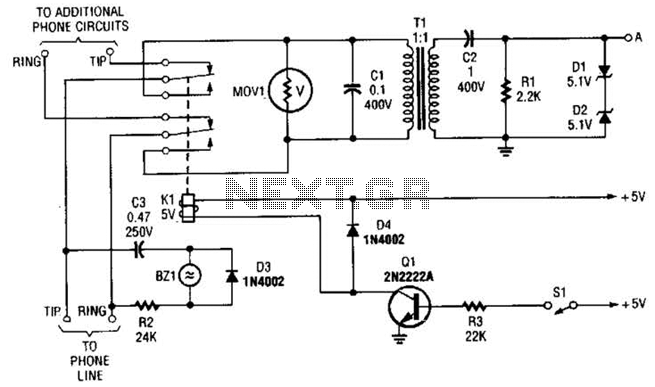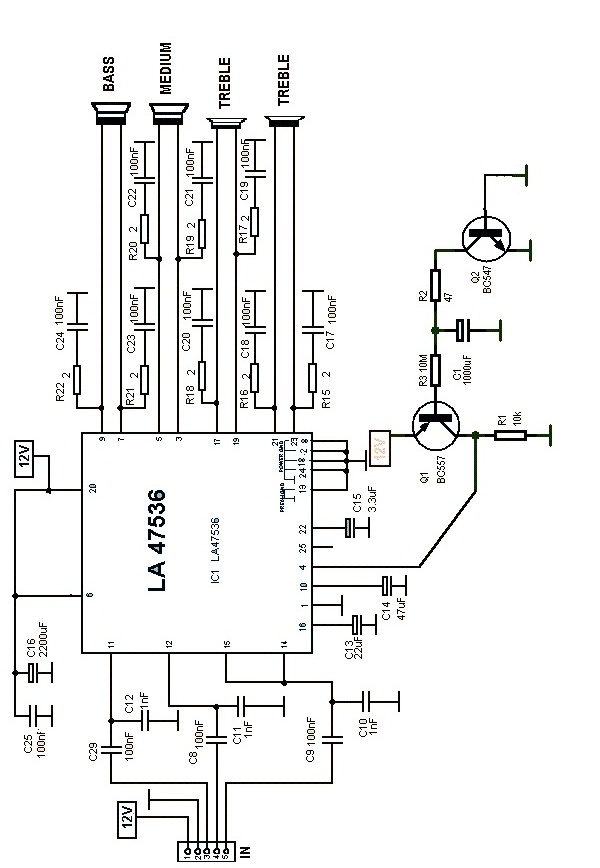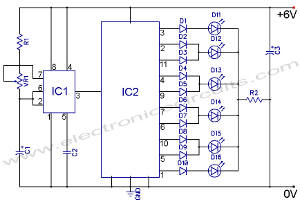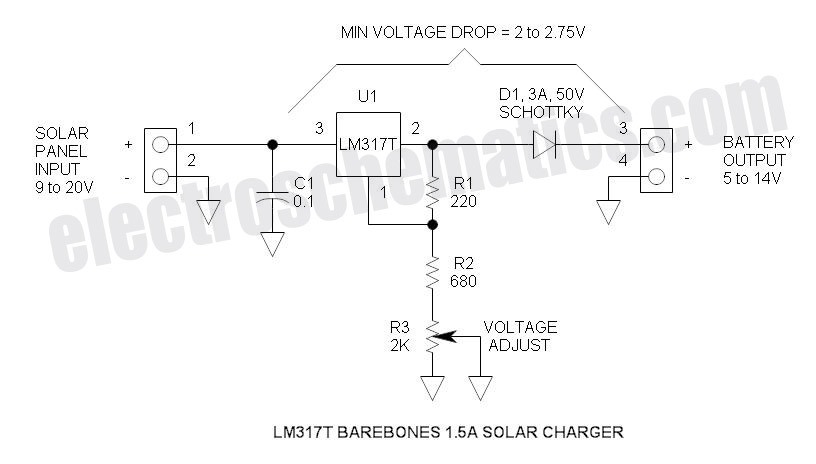
Miniature FM transmitter circuit
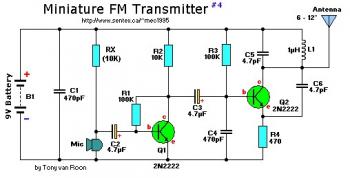
This small FM band transmitter utilizes only two 2N2222 transistors and is capable of transmitting signals up to 1 kilometer away, provided there are no obstacles between the two antennas. The circuit features a microphone preamplifier stage with the first 2N2222 transistor, followed by a transmitting stage using the second 2N2222 transistor. The performance of the transmitter is significantly influenced by the type of antenna employed. A 9-volt battery can power the circuit for several hours, while a 9-volt power supply can be used for extended operation.
The FM band transmitter circuit is designed for simplicity and efficiency, leveraging the characteristics of the 2N2222 transistors, which are well-suited for low-power applications. The first stage, which functions as a microphone preamplifier, amplifies the audio signal from a microphone before it is fed into the transmitting stage. This configuration ensures that the audio input is sufficiently amplified to modulate the carrier frequency effectively.
The second stage utilizes the second 2N2222 transistor as a radio frequency (RF) amplifier. This stage is responsible for modulating the amplified audio signal onto the carrier frequency, allowing it to be transmitted over the air. The choice of antenna plays a critical role in the transmission range and quality; a well-designed antenna can significantly enhance the effective range of the transmitter.
Powering the circuit with a 9-volt battery provides portability, making it suitable for various applications, including outdoor use. However, for longer operational periods, connecting the circuit to a 9-volt power supply is recommended to ensure continuous performance without the need for frequent battery replacements.
Overall, this compact FM transmitter circuit is an effective solution for short-range audio broadcasting, demonstrating the capabilities of discrete transistor technology in RF applications. Proper design considerations, particularly regarding the antenna and power supply, will maximize the transmitter's performance and reliability.By using only two 2n2222 transistors, this small FM band transmitter can transmit its signal to 1Km away (without obstacles between the two antennas. The first stage of the circuit you see the Mic preamplifier state with the first 2n2222. The next state with the other 2n2222 is the transmitting stage. All success is based on the type of antenna that you are going to use with it. A 9 volts battery can drive the circuit for few hours. If you need longer times just use a 9v power supply. 🔗 External reference
The FM band transmitter circuit is designed for simplicity and efficiency, leveraging the characteristics of the 2N2222 transistors, which are well-suited for low-power applications. The first stage, which functions as a microphone preamplifier, amplifies the audio signal from a microphone before it is fed into the transmitting stage. This configuration ensures that the audio input is sufficiently amplified to modulate the carrier frequency effectively.
The second stage utilizes the second 2N2222 transistor as a radio frequency (RF) amplifier. This stage is responsible for modulating the amplified audio signal onto the carrier frequency, allowing it to be transmitted over the air. The choice of antenna plays a critical role in the transmission range and quality; a well-designed antenna can significantly enhance the effective range of the transmitter.
Powering the circuit with a 9-volt battery provides portability, making it suitable for various applications, including outdoor use. However, for longer operational periods, connecting the circuit to a 9-volt power supply is recommended to ensure continuous performance without the need for frequent battery replacements.
Overall, this compact FM transmitter circuit is an effective solution for short-range audio broadcasting, demonstrating the capabilities of discrete transistor technology in RF applications. Proper design considerations, particularly regarding the antenna and power supply, will maximize the transmitter's performance and reliability.By using only two 2n2222 transistors, this small FM band transmitter can transmit its signal to 1Km away (without obstacles between the two antennas. The first stage of the circuit you see the Mic preamplifier state with the first 2n2222. The next state with the other 2n2222 is the transmitting stage. All success is based on the type of antenna that you are going to use with it. A 9 volts battery can drive the circuit for few hours. If you need longer times just use a 9v power supply. 🔗 External reference
